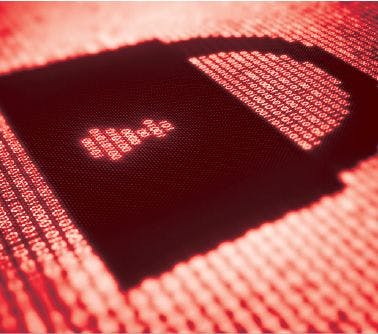The Question of Chromatographic Integration in Data Integrity
The topic of chromatographic integration and data interpretation raises a lot of questions about data integrity. Is it acceptable to integrate data? What are the limits?
We asked Mark E. Newton, of Heartland QA, in Lebanon, Indiana, to weigh in.
It’s interesting. I would say manual integration is acceptable. So long as you make a provision in your process that says when I do manual integration, I recognize there is risk here and therefore commensurate to that risk there is an additional set of review.
So for example, in your laboratory you may say when somebody engages in manual integration, there should be somebody who is a data reviewer with a lot of experience who is perhaps a senior individual in that laboratory. They’re able to look at your chromatography and say it’s reasonable chromatography, it’s scientifically sound, and therefore it stands as it is.
I would encourage everybody as much as possible to work on automating their integration. If for no other reason, it’s far more efficient. I remember we ran some numbers back a few years ago and said that for every chromatogram that we could integrate automatically we would realize a savings; it was in the range of 15 to 20 minutes per injection so you can save some time simply by trying to move your methods to automated integration as opposed to manual integration. If for no other reason you just gain efficiency on it, so it’s a win in that regard as long as the risk is commensurate and known.
I think the one dangerous thing to me is if you’re not going to do manual integration, your other choice would be to actually take the chromatography integration parameters and adjust them as needed to fit the particular run that you’re dealing with. The issue is you’ve got to be careful about is that you can literally get to where you’re manipulating the system to do what you would have done manually, so you’re just using this system to do the same thing. So even though one of them is automated and one of them is manual, you need to look at the record of what’s being done and why is it being done and ask: is it reasonable to do that? This is because people can use the automated system to manipulate data as well.
So just because it’s automated versus manual doesn’t mean it’s safe versus dangerous. It means that the more data you have, the less robust the method. It also means that the more intervention that is required on the part of the user, either in parameters or in manual integration, the more review is necessary to determine that it’s scientifically reasonable and valid.
Are there best practices that companies should follow with respect to chromatographic integration?
The first rule would be to follow Norm Dyson’s and get a good method first. Unfortunately, people are too quick to rush in to try and put lipstick on the pig. And sometimes you have a method that is your problem, not your manner of the integration of it.
And so I would tell people if you’re having a hard time getting chromatography to work for you, why don’t you take a step back and look at your chromatography first? Try a different method or try a newer technique for doing this rather than doing the old method that you ran the last 15 or 20 years. Try something new and see if you can’t get a better method out of the process because I’ve seen situations where you’d scratch your head and think why you are doing this. You know, the other metric I would encourage people to consider is what would be ‘right first time.’ How many times can you set up a run, do the run, process the run, and release the data the first time? By considering ‘right first time,’ I don’t have to go back and reinject something, and I don’t have to go back and reprocess it all over again. How many times can I just workflow it all the way through to the end and do that time after time?
If you’d start keeping metrics on how often we get it right the first time versus how often we have to either reprocess or reinject something to get an acceptable set of results, I think you could find pretty quickly where your problems are in your lab and where it would be worth devoting your resources.
Mark E. Newton is the principal at Heartland QA in Lebanon, Indiana. Direct correspondence to: mark@heartlandQA.com.

Newsletter
Join the global community of analytical scientists who trust LCGC for insights on the latest techniques, trends, and expert solutions in chromatography.
Researchers Explore Gas Chromatography to Improve Forensic Ink Analysis
July 25th 2025Ink authentication is often complicated by tampering, aging, and chemical variability. Now, forensic scientists are turning to advanced gas chromatography (GC) techniques to enhance the accuracy and efficiency of ink analysis.
18 Scientists from the US and Canada Win Scialog Awards for Advancing Chemical Lab Automation
July 7th 2025Seven research teams from universities across the United States and Canada have been honored for their collaborative efforts that integrate automation and artificial intelligence (AI) to tackle fundamental scientific challenges.
New HPLC, MS, and CDS Products from 2024–2025: A Brief Review
June 5th 2025This review highlights the high performance liquid chromatography (HPLC), mass spectrometry (MS), chromatography data systems (CDS), and related products that were introduced from 2024 to 2025, summarizing the technical specifications of each product and highlighting significant user benefits.

.png&w=3840&q=75)

.png&w=3840&q=75)



.png&w=3840&q=75)



.png&w=3840&q=75)






